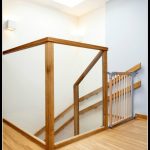When planning a kitchen remodel, one of the most significant decisions is whether to reface or replace your cabinets. Both options offer distinct advantages depending on your goals, budget, and kitchen’s condition. Let’s break down the differences to help you decide which approach suits your needs best.
What Is Cabinet Refacing?
Cabinet refacing is a cosmetic update where you keep the existing cabinet framework but replace the doors, drawer fronts, and hardware. The visible parts of the cabinet are covered with a new veneer or laminate to give them a fresh look.
Let’s say you’re planning a kitchen cabinet remodeling in Tyler. You can start by consulting with professionals to explore how refacing can provide a cost-effective way to refresh your kitchen while keeping its existing layout intact.
Benefits of Refacing Cabinets
- Lower Cost: Refacing typically costs less than replacing cabinets. It’s a budget-friendly way to update your kitchen’s look without a complete overhaul.
- Quick and Less Invasive: Refacing usually takes a few days and involves less disruption than a full replacement. Your kitchen remains functional during most of the process.
- Eco-Friendly: Since refacing reuses the cabinet boxes, it generates less waste, making it a greener choice.
Drawbacks of Refacing
- Limited Structural Changes: If your cabinets are damaged or poorly designed, refacing won’t address these issues. You’re working with the same basic structure.
- Shorter Lifespan: The new doors and veneers may look great, but the underlying cabinet boxes are still the same age. Refaced cabinets may not last as long as entirely new ones.
What Is Cabinet Replacement?
Cabinet replacement involves removing your old cabinets and installing new ones. This allows for total flexibility in terms of layout, design, and storage features.
Benefits of Replacing Cabinets
- Full Customization: When you replace cabinets, you can redesign the entire kitchen layout, add storage solutions, and choose high-quality materials. This is your chance to build the kitchen of your dreams.
- Increases Home Value: High-quality new cabinets can significantly boost your home’s resale value, making it a wise investment if you plan to sell in the future.
- Fixes Structural Issues: If your current cabinets are damaged, warped, or worn out, replacement is the only way to ensure a fresh start.
Drawbacks of Replacing
- Higher Costs: Replacing cabinets is more expensive than refacing, especially if you opt for custom designs or high-end materials. Labor costs also add up due to removal and installation.
- Longer and More Disruptive: Cabinet replacement can take weeks and may involve tearing out part of your kitchen. This can be inconvenient, especially if you rely on your kitchen for daily use.
Cost Comparison: Refacing vs. Replacing
Cabinet Refacing Costs
Refacing typically costs between $4,000 and $9,000 for an average kitchen, depending on materials and finishes. It’s a good option if you want to save money while still giving your kitchen a fresh look.
Cabinet Replacement Costs
A complete replacement generally ranges from $10,000 to $25,000, with costs varying based on whether you choose stock, semi-custom, or custom cabinets. Replacing cabinets is more expensive but can offer better durability and higher value over time.
When to Choose Cabinet Refacing
Refacing works best if you’re happy with your current kitchen layout and your cabinet boxes are in good condition. Here’s when refacing is the right choice:
- You’re on a Budget: If you want a fresh look without spending too much, refacing is a cost-effective option.
- Your Cabinets Are Structurally Sound: If the existing framework is in good shape, refacing can provide a like-new appearance.
- You Need a Quick Solution: Refacing is faster and less invasive than replacement, making it ideal for those who don’t want a lengthy kitchen renovation.
When to Choose Cabinet Replacement
If your cabinets are old, damaged, or no longer meet your needs, replacement is the better choice. Here’s when it’s best to opt for replacement:
- Your Cabinets Are Damaged: If your cabinets are showing signs of wear, water damage, or other issues, replacing them is the best way to fix the problem.
- You Want a New Layout: Replacing your cabinets allows you to completely redesign the kitchen layout, improving functionality and adding storage.
- Long-Term Investment. If you plan to stay in your home for many years, new cabinets offer a durable solution that can last for decades.






